The content in this post about teaching piano chords was originally published in separate articles in August 2014, June 2017 and August 2017, and updated in April 2020.
When, in your own piano student journey, did YOU learn what chords could do? Teaching piano chords should be an essential part of any curriculum… and yet, I find most students learn about chords far too late.
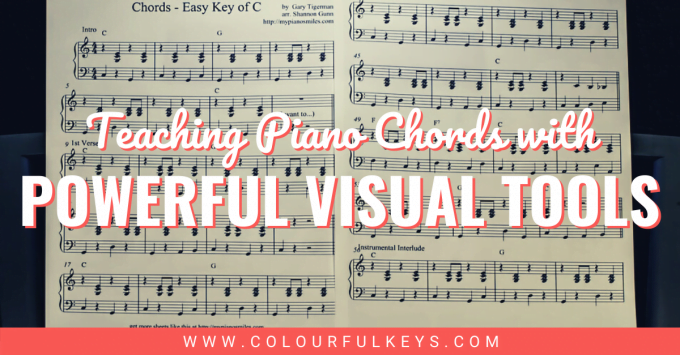
One reason that teachers don’t get to teaching piano chords earlier is that the ways we were taught them would go over most young students’ heads. (SATB and Roman numeral analysis, anyone?)
But teaching piano chords doesn’t have to be complicated. At their core, chords are simple structures with unique relationships to each other that make them sound delicious, comforting or surprising – depending on which combination we choose.
These powerful visual tools and tricks will help you teach chords in a way that’s accessible even for young students.
How Chords Are Built
Teaching major or minor triads is easy when you focus on how they’re built, and what better way than to map them out right on the piano?
Keyboard Mapping
I like to introduce chords to my students by revealing the pattern of tones & semitones (that’s whole steps & half steps, for my friends in the USA.)
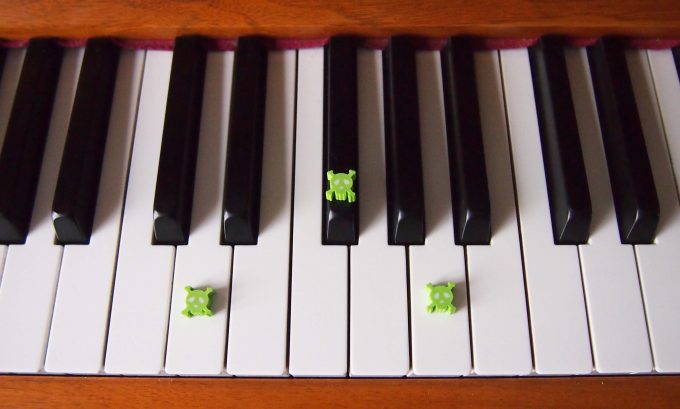
Using small tokens on the keys makes understanding chord construction pretty straightforward.
Worksheets
These worksheets cover the first 12 chords a student often learns, since these chords each have only 1 black key and are a little easier to remember.
(Psssst… While these worksheets are a great resource, Vibrant Music Teaching members might prefer a more comprehensive chords booklet found in the VMT library.)
USA Version
International Version
Videos
Thinking Theory videos are meant to give students a quick introduction to a concept before you talk about it in lessons, or as a reinforcement afterwards. The videos are especially powerful because they can free up lesson time for application or reinforcement of the concepts.
Send Thinking Theory videos to parents for their kids to watch, use them in group lessons or assign them as part of lab time in buddy lessons.
Major Chords
These videos about constructing major chords correlate directly to page 34 of my Thinking Theory Book Two. (Check out the full Thinking Theory series to see what makes these workbooks so special.)
USA Version
International Version
Minor Chords
These videos about constructing minor chords correlate directly to Thinking Theory Book Three, page 31.
USA Version
International Version
These videos are designed to be clear and concise so that students can watch them and then get on with some written work for reinforcement, saving you time to do fun activities during the lesson.
Reinforcing the Visual Patterns
When it’s time to teach major or minor chords to my piano students, I want them to see the visual patterns. Noticing this pattern of white and black keys is what will help them memorise and internalise the chords as quickly as possible.
If we build this instant recognition first, we can tackle the notation side of things later.
Musical Alphabet Blocks
I often use my musical alphabet blocks to reinforce these patterns, as my students love building things on the floor.

But I was looking for more ways to further cement this concept.
Pattern Sheets
Then one day, I was watching a mastermind in Tim Topham’s Inner Circle with Susan Deas and it hit me.
You see, Susan reviews the chords using a grid with each of the chords on it. She points to each chord at random and students have to play the chord to pass the “test”.
I’ve taken this idea – and I added another level.
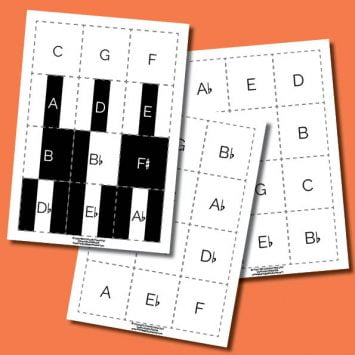
These major and minor triad grid sheets include a sheet which emphasises the visual patterns. My students use the patterned sheet in the beginning, before transitioning to the random sheet. Download your copy of the triad grid sheets below. (Vibrant Music Teaching members can access them directly in the VMT library.)
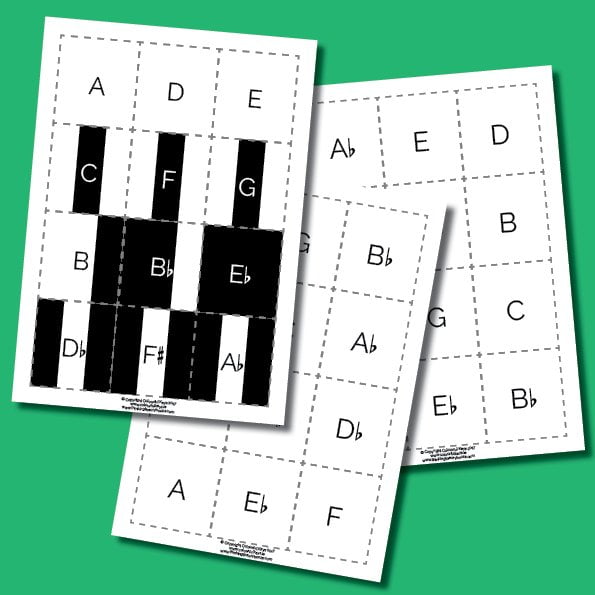
Subscribe to the newsletter and get the Visual Chord Pattern Grids
Enter your details to subscribe to the newsletter for piano teachers with information, tips and offers.
I hate spam as much as you do! I will only send you emails related directly to piano teaching and you can unsubscribe at any time.
Chord Notation and Function
You may have heard of “3 chord songs,” and even if you haven’t heard them called that, you’ve certainly heard the songs. They’re everywhere!
This is a series of worksheets for the primary (I, IV, V) chords in the three simplest key signatures: C, F, and G.
These worksheets will help students to remember these very important chords so that they can be quickly called to mind when they’re needed for lead sheets, improvisation and music analysis.
(VMT members can help themselves to these worksheets or, for a more comprehensive resource, grab the chords challenge booklet from the VMT library.)
The more ways we experience new material, the easier and more reliably we can remember them. So I assign these worksheets after sending students the Thinking Theory videos and reinforcing chord construction in the piano lesson, along with a practical assignment that incorporates the chords.
If you feel like playing around with a super cool resource to see just how many “3 chord songs” there are, you should definitely check out Hook Theory, which Tim Topham has blogged about.
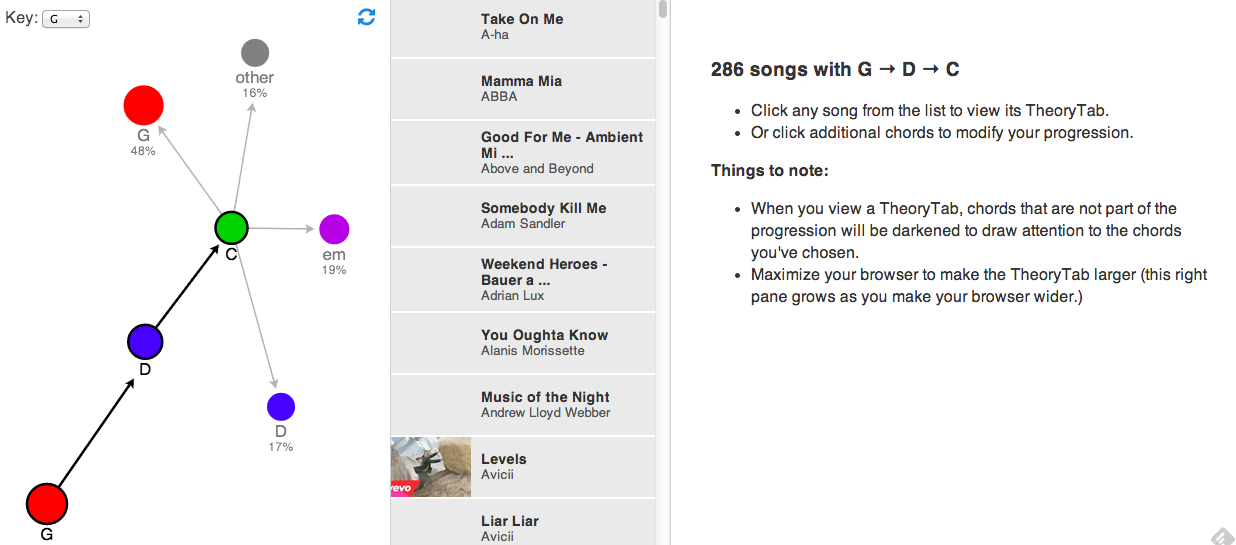
On the Hook Theory page, go to the trends tab and you’ll see loads of examples based on a selected chord progression, in any key. For example, the image above is the progression of G, D, C in the key of G major.
(WARNING: You could easily get lost on this site for hours, use it at your own risk! ⚠ 😉)
How do you teach piano chords?
Do you encourage students to see the visual patterns, or dive right in with SATB analysis? Share your thoughts in the Vibrant Music Studio Teachers Facebook community or in the comments below. For even more amazing ideas about teaching chords, check out my Music Theory page.
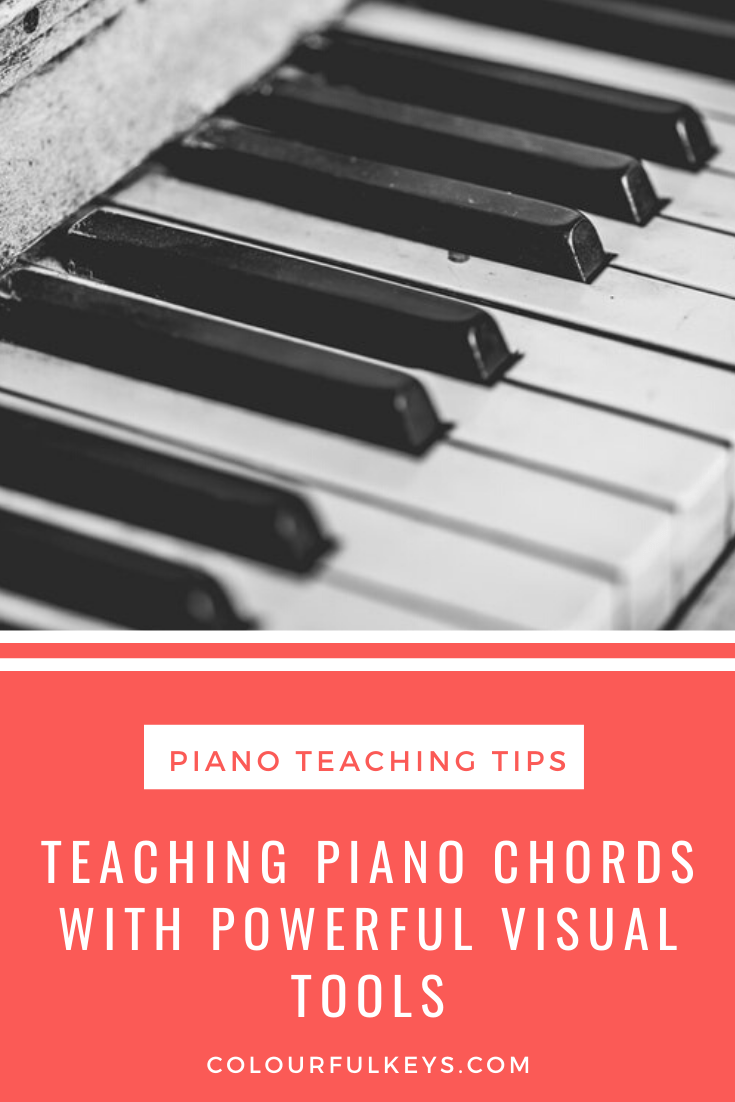

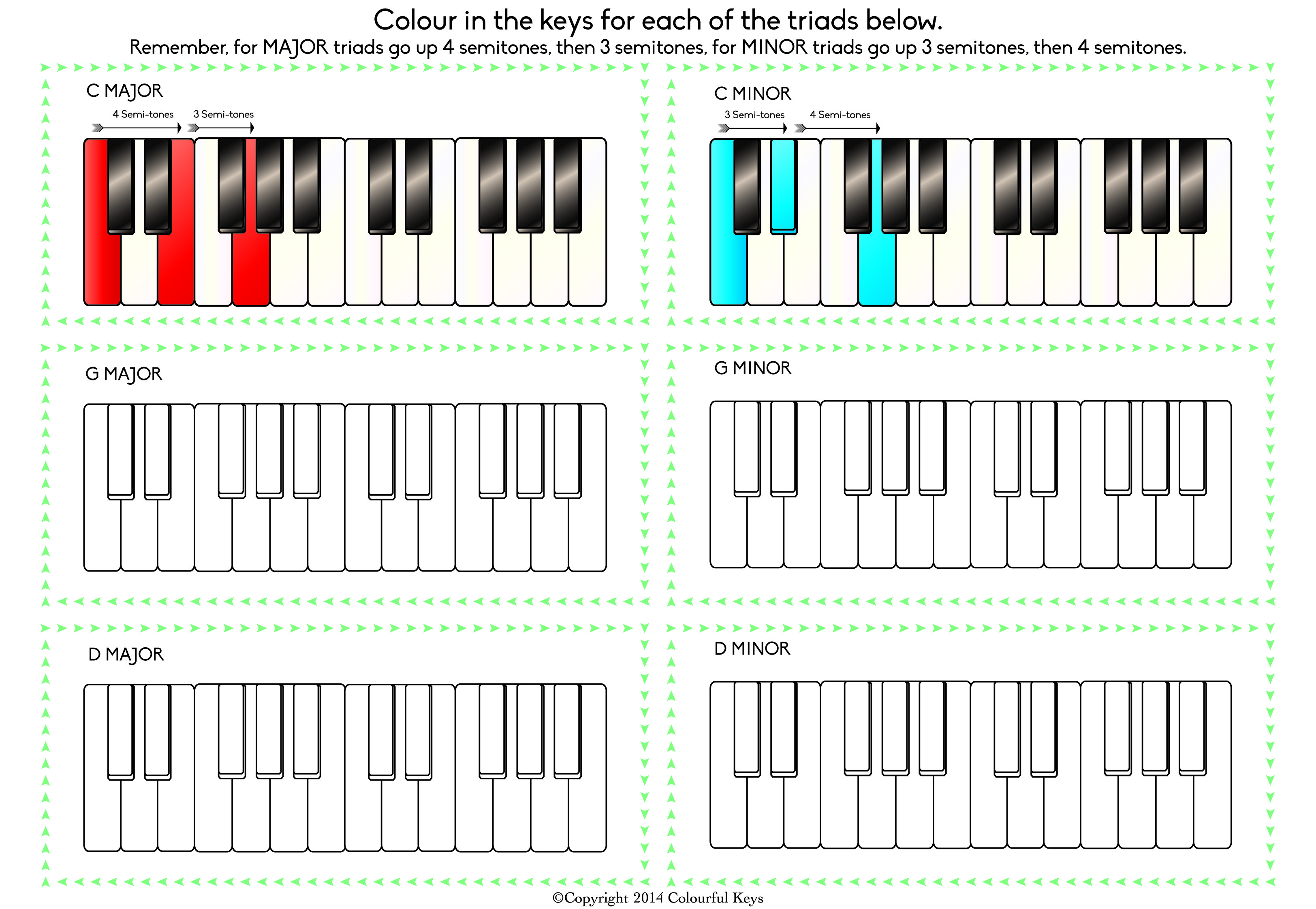
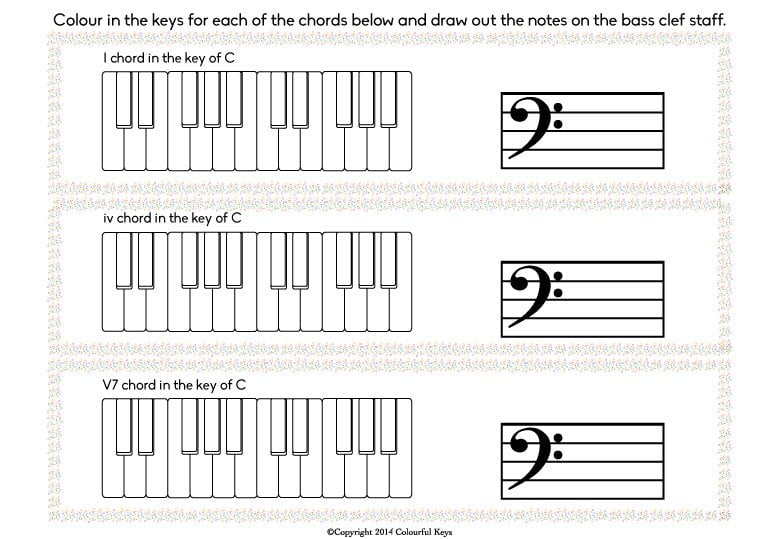
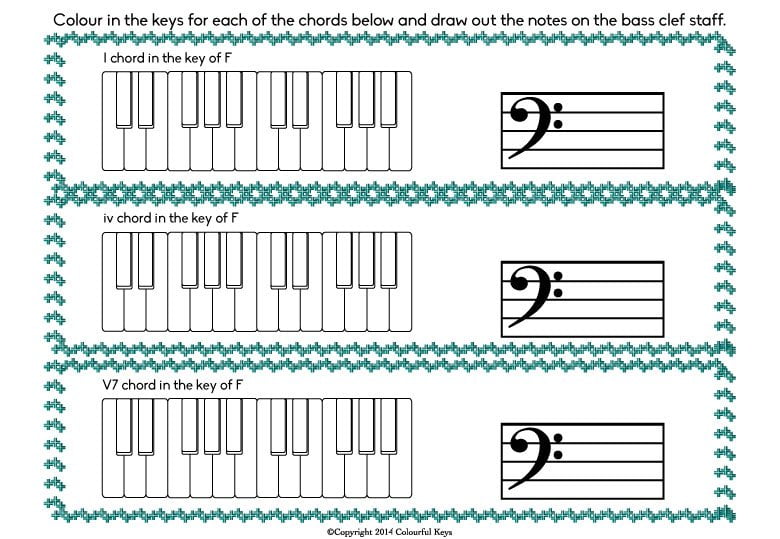

I downloaded the scale blocks, but I don’t understand how to use the ones that are black but appear to be natural notes, not sharps or flats.
Those are not meant to be blocks Deb, they’re pattern sheets. The black and white patterns match the pattern of keys in the triad – e.g. white black white for the A major triad.
Aha! Got it now.
Thank you Nicola 🙂
this is great! I was able to use this for my students music assessment test =)
Thank you so much Renda for this very useful and interesting feedback on ‘Teaching Piano Chords…’ for use as a music assessment test!